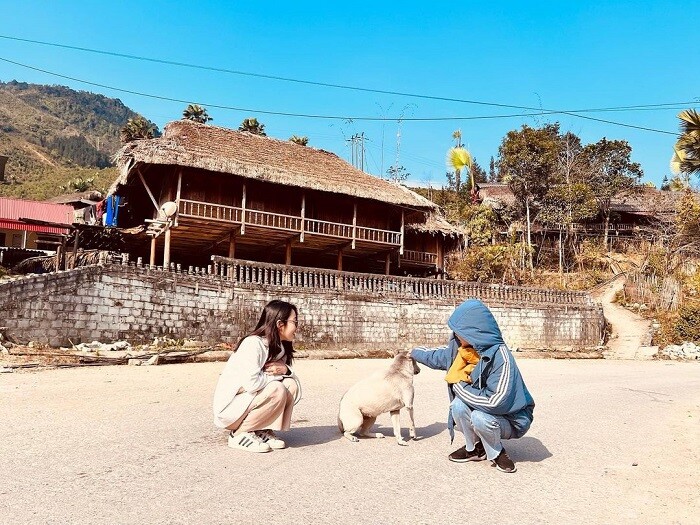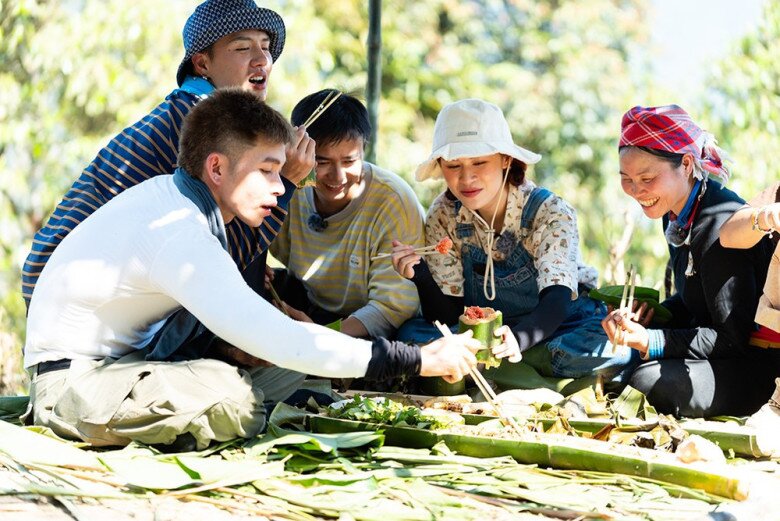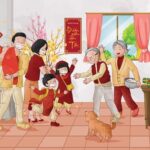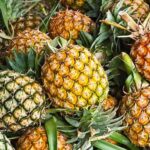
Nestled in the lush mountains of Lao Cai, Ban Lien is an emerging community-based tourism destination that boasts a sustainable and authentic experience. Unlike the bustling and well-known Sa Pa, Ban Lien offers a glimpse into the untouched beauty of northern Vietnam, where visitors can immerse themselves in the simple life of the Tay and Mong ethnic minorities.
Located in Bac Ha district, about 30 km from the center of Lao Cai province, Ban Lien is the northernmost commune in the province, bordering Xin Man district in Ha Giang province. With its rugged terrain, lush forests, and pleasant climate, Ban Lien is a nature lover’s paradise and a perfect escape from the hustle and bustle of city life.

The charm of Ban Lien lies in its breathtaking landscape, a picturesque tapestry of traditional stilt houses nestled among the cascading rice terraces. These terraces change hues with the seasons, from vibrant green in spring to golden yellow during harvest and shimmering mirrors reflecting the sky when flooded for irrigation. The beauty of Ban Lien is a unique blend of the famous landscapes of Hoang Su Phi and Mu Cang Chai, with the tranquil charm of Sa Pa’s villages, yet it retains its own distinct, untouched character.

Ban Lien welcomes visitors all year round, offering a unique experience in every season. In spring, the pinkish-red blossoms of peach trees contrast beautifully with the misty backdrop. However, the most captivating time to visit is autumn, when the air turns crisp and the rice fields glow with a golden hue. The scent of freshly harvested rice blends with the aroma of the mountains, creating an indescribable sense of peace and tranquility unique to this region.
Cultural Immersion and Community Experiences
Ban Lien is home to the Tay and Mong ethnic groups, whose rich cultural heritage is woven into the very fabric of this land. Beyond the stunning scenery, visitors have the opportunity to delve into the local customs and way of life. The traditional wooden stilt houses, meticulously crafted and surrounded by lush gardens, exude a sense of tranquility and simplicity.

The local government has been focusing on developing Ban Lien as a sustainable community-based tourism destination, encouraging visitors to actively participate in the daily lives of the locals. This provides a unique opportunity for travelers to truly live like a local. You can join the villagers in their daily chores, such as tea picking in the forests, fish catching in the streams, or learning traditional crafts like making conical hats and straw mats and chairs. The culinary experience is a highlight, as visitors are invited to try their hand at making local specialties like sticky rice cakes, square glutinous rice cakes, and the famous Tay ethnic group’s cassava cake.
Culinary Delights and Local Specialties
The cuisine of Ban Lien reflects the region’s cultural heritage and the ingenuity of the Tay people in utilizing local ingredients. One signature dish is the cassava cake, made by grinding boiled cassava, shaping it into flat rounds, and grilling it over charcoal. Another variation is the “cassava sausage,” a mixture of fresh cassava, eggs, and spices, fried to perfection. These dishes offer a delightful blend of flavors, with the sweetness of cassava complemented by the richness of eggs.

On chilly evenings in Ban Lien, there’s nothing quite like gathering around a cozy fire, roasting cassava cakes, and sipping on locally produced tea. It’s the perfect setting to listen to stories and gain a deeper understanding of the Tay people’s culture and traditions from the friendly locals. For a heartier meal, you can also order a homestay meal, featuring local specialties harvested from the surrounding gardens, for around VND 100,000-120,000 per meal.
Don’t miss the chance to explore Ban Lien’s weekly Thursday market, a vibrant gathering of the Tay, Mong, and Dao ethnic groups. Here, you can sample unique local dishes like “mèn mén” (a dish made from corn and green beans), sour pho, horse “thang co” (a traditional ethnic minority dish made from horse meat and offal), and “khau nhuc” (a dish made from pork blood and offal). Be sure to try the famous Bac Ha tea, a local specialty that makes a wonderful souvenir.
Accommodations in Ban Lien
In line with its community-based tourism model, Ban Lien offers homestay accommodations managed by local families. One notable homestay is BanLien Pine, owned by Ms. Thong, which gained popularity after hosting the artists of the “Haha Family” program. Currently, BanLien Pine is fully booked until July, but visitors can make reservations for August or September.
Other homestays in Ban Lien include Vang Binh Homestay, Nang Can Homestay, and Huong Hoan Homestay, with rates typically around VND 150,000 per person per night for shared stilt houses. As these homestays are still relatively new, visitors are advised to bring their own mosquito repellent, towels, and personal hygiene items to ensure a comfortable stay.
With its focus on community-based tourism, exploring Ban Lien has become more accessible. Although it is a bit distant from the city center, the journey is convenient by motorbike or car. A motorbike is particularly advantageous for enjoying the stunning scenery along the way and making stops at your leisure.
Ban Lien captivates visitors with its breathtaking scenery, warm-hearted locals, rich culture, and delectable cuisine. Its commitment to sustainable tourism ensures that the area’s natural beauty and cultural heritage will be preserved for future generations, offering unforgettable experiences and cherished memories of this enchanting highland destination.
Dr. Nam Min and His Professional Philosophy: The Heart of a Healer
With over a decade of experience in the medical field, Dr. Nam Min (born Nguyen Hung Nghia) is renowned not only for his expertise but also for his compassionate and dedicated approach to patient care. For Dr. Min, medicine is more than just physical treatment; it is a mission to bring peace of mind, trust, and hope to everyone he serves.
Are Pineapple, Fragrant and Khóm Three Different Fruits or Just Different Names for the Same Thing?
Pineapple, a tropical fruit with a unique and distinctive appearance, is known by many names across the globe. With its spiky, vibrant green foliage and golden, juicy flesh, this exotic fruit has captured the hearts and taste buds of people worldwide. But beyond its captivating appearance lies a wealth of health benefits and a fascinating cultural significance that deserves to be explored and celebrated.






































